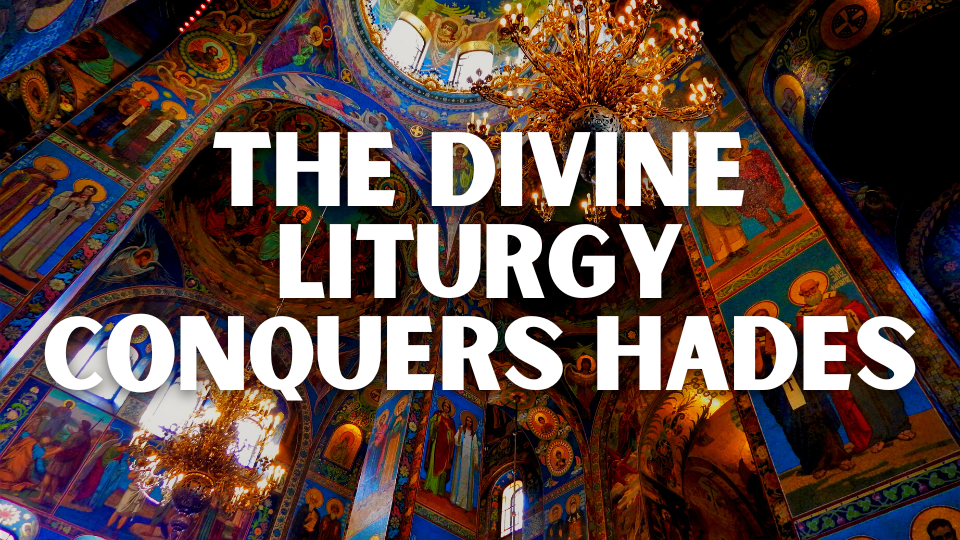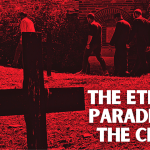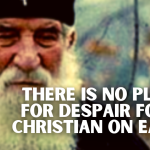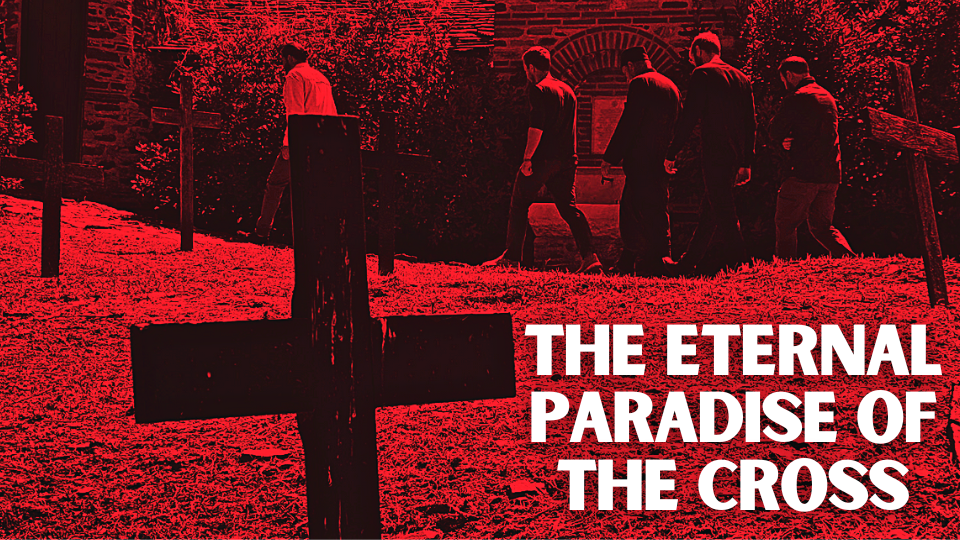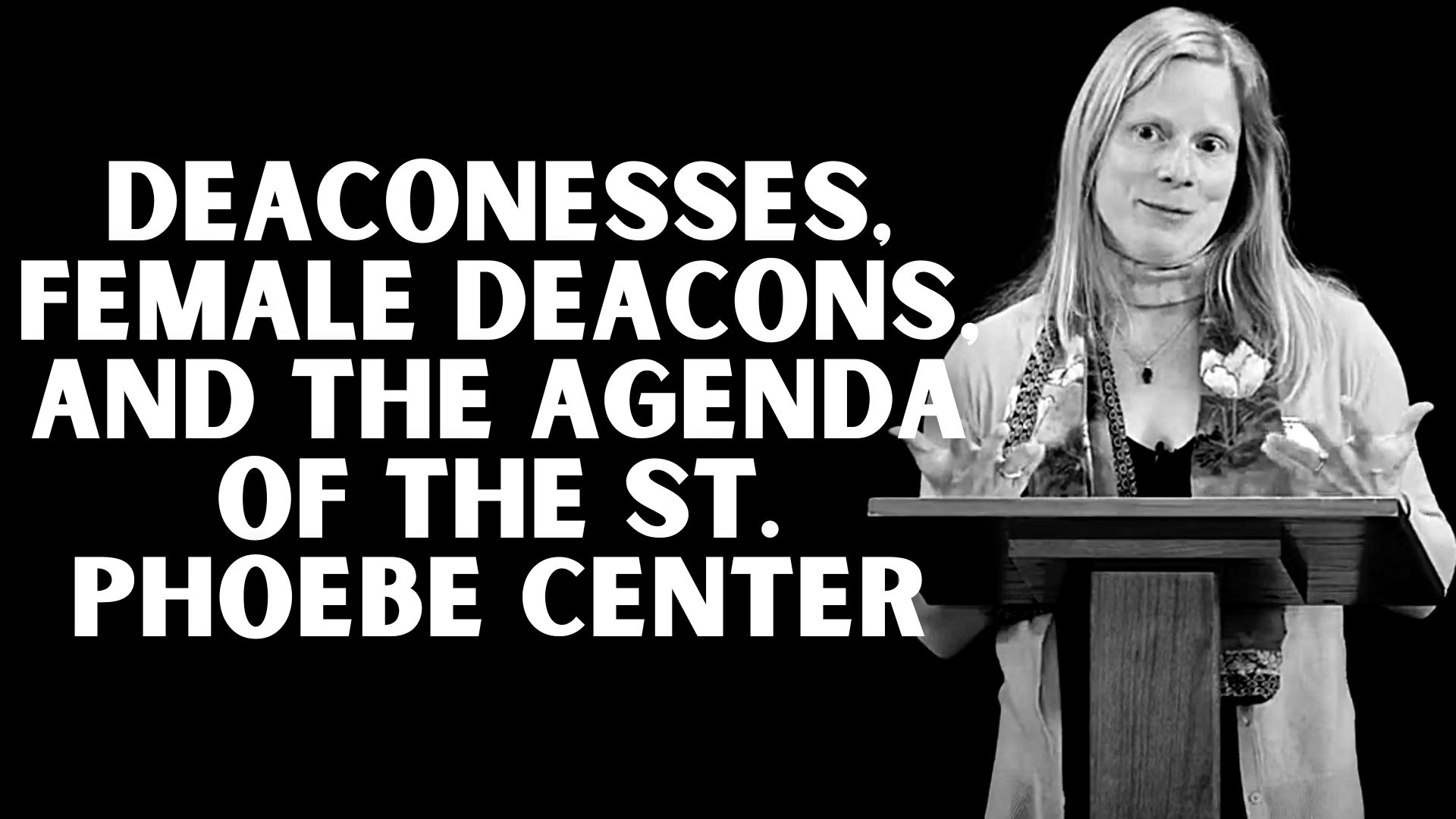Below the reader will find my translation from the Russian of sermon number 18 by St. Seraphim (Zvezdenski), On the Divine Liturgy. The preceding sermons may be found by clicking here.
St. Seraphim reminds us that the only way to rise up from the darkness that surrounds our world and us is through the worship of our Lord Jesus Christ, specifically in the Divine Liturgy. May we, as he exhorts us to do, cling with all our strength to our Lord Jesus Christ.
The sermons speak for themselves, so I leave you, the reader, to be nourished on the words of St. Seraphim on the Divine Liturgy.
All titles of the sermons are my own for the purposes of this blog, in the original, they are simply numbered.
Sermon 18
My friends, my dear ones, there was a fearfully deep and horrible abyss. It was pitch black and not one single ray of sun broke its gloom; it was suffocating and not one little gust of fresh air ever stirred in it; it was full of creeping things, snakes, and stench. In this abyss prisoners languished, they languished in misery and sorrow. Suddenly a magnificent and mighty eagle flew into this abyss. He stretched out his two great wings and cried out, “All of you miserable and suffocating prisoners who are languishing in this abyss, take hold of my wings, hold on tightly to them, and I will carry you up into the heights, even to the sun! The prisoners believed the eagle and took hold of his mighty wings, holding tightly, and the mighty eagle carried them out of the abyss. Higher and higher he carried those who clung to his wings. Already the expanse of the earth could be seen, and he climbed higher still! They asked the eagle, “Thank you, we now see the whole dear world, where else are you taking us?” “Only hold on tightly and I will carry you higher still, to the very sun!” And he began ascending higher and higher. Up past heaven, past the shining and radiant luminaries; he flew to the second heaven, then to the third, and to the heaven of heavens but he did not stop even there; he ascended to the very throne of the Eternal Sun and here before the face of the Almighty he set down everyone he was carrying.
My friends, this eagle is Christ our Savior. The abyss from which He delivered us is Hades, where all those under the Old Testament were imprisoned, languishing under the bonds and chains of satan – the prophets and righteous ones and all the departed. To these sorrowful ones, the eagle descended because the texts of the Holy Scriptures call Him an eagle.[1]Cf. Psalm 90/91:1-4; Exodus 19:4
Our Risen Lord descended even to these sufferers, during which time no one on earth yet knew of His Resurrection, for the dawn was just breaking on the Day of Resurrection. I have already said that the exclamations, “Through the compassions of Thine Only-begotten Son …,” “Peace be unto all,” and “Let us love one another …” signify the first proclamation of the Resurrection in Hades.[2]The reality of the Resurrection was manifested to those in Hades before it was revealed to those on earth. The singing of the Symbol of Faith represents the delight of those in Hades who were the first to receive this proclamation (of the Resurrection). The exclamation, “Let us lift up our hearts,” is the appearing of the Deliverer Himself in Hades. He appeared and shattered the gloomy abyss of Hades; He appeared and its gates crumbled for all eternity! All of those resurrected stood on its gates, trampling them and their bonds underfoot, as it is depicted in the fresco at the Church in Chora.[3]A famous fresco depicting the Resurrection.
First, the Lord called to fallen Adam and he took hold of His mighty wing – the hand of the Savior – and clung to it with the delight of thanksgiving, and on the other hand, clung Eve. She fell prostrate before the Deliverer, daring not even to look on Him. Then came the prophets and the other righteous ones of the Old Testament, “In joyful step, praising the eternal Pascha.”
And so, this leading of the departed out of Hades is commemorated in the exclamation, “Let us lift up our hearts.” But now there is also another Hades – fearful, gloomy, terrible, and unbearably heavy – the hades of the soul. This is when the soul is engulfed in the grief of loneliness, for it seems that you are forgotten by everyone and abandoned; it is also when the soul is weighed down in the abyss of the passions, those creeping serpents of our life. Into this abyss of despair and sin flies the Eagle – the Savior – and lifts up our souls on His mighty wings and carries us to the Never-setting Sun. These wings are the Most-Pure Body of Christ and His Life-creating Blood. Who has not known this hades of the soul? Who has not lived through times of complete despair, and feelings of total abandonment? And yet, after communing of the Life-creating Mysteries of Christ, who has not received grace-filled help and healing? These all-healing Holy Mysteries we receive at the Divine Liturgy. How thankful we must be to the Lord for this priceless gem that has been given to us. St. John Chrysostom says that even if we were never able to taste of the Holy Mysteries, and were only able to gaze upon them as they were carried before our eyes, even then we must give thanks to the Lord. But we have been granted to taste of them!
My lips just received the Holy Body and my tongue was just moistened with the Life-creating Mysteries! I call to you my poor and sorrowful friend – sinful, weak, wallowing in the passions, and exhausted in the battle with temptation – come here to the Holy Chalice and be strengthened because here is strength; come here and be reborn because here is life; come here and be enlightened because here is light; come here and leave behind your falls into Hades, even if you have fallen into the very claws of Satan. Only come here because here is salvation. Only do not tarry, only do not neglect the greatest gifts of God, only cry with contrition, “Have mercy on me!” Have faith that you will be heard. Only rise up from worldly cares and vanities that are so full of lust and impurity. Lift up your heart on high, take hold of the Savior’s two wings, and come to the pure spring of the Divine Liturgy.
The holy Fathers knew the great power of the Divine Liturgy and proclaimed their awe before it. When the venerable Father Seraphim[4]Of Sarov was infirm and someone said that it must be hard for him to attend the Liturgy, he answered, “Yes, but even if I had no strength to walk at all, I would crawl there on my hands and knees.”
“Let us lift up our hearts” – lift up unto the heights, lift up your heart above everything earthly. This exclamation calls us to carry our hearts high above everything lowly and earthly and to lift our thoughts to the heights as we stand before the most important moment of the Liturgy. At this moment, at least forget about the daily vanities and cares of this life. Be like an angel, full of thoughts only about God and service to Him. Behold here and now He is present and blesses you.
The venerable Father Seraphim beheld the Lord Jesus Christ, surrounded by the hosts of heavenly powers, come from the western door and walk to the eastern door. With His outstretched arms, He blessed all those gathered in prayer, covering them with His hands as with wings. Many other saints have beheld Him too. The ancient Christians beheld Him and felt His presence. Only we with our earthbound hearts, which we never lift up to the heavens, only we do not behold Him. But it is worth our while to at least raise ourselves up a little bit above our earthly cares – then we will feel His closeness. This is why at the call to “lift up,” the ancient Christians, all together, however many were gathered in the temple, exclaimed, “We lift them up to the Lord” – we lift up our hearts to the Lord! Today only the choir responds.
The call to “Lift up our hearts” prepares us for the most majestic portion of the Divine Liturgy, which begins with the exclamation, “Let us give thanks to the Lord” and is completed with the exclamation, “And grant that with one mount and one heart.” This section is called the Eucharist canon or the Eucharistic portion. “Eucharist” is from a Greek word that means, “thanksgiving.” “Canon” means “rule” or “standard.” In that sense, this part is called the standard of thanksgiving. This is because, specifically, at this point of the Divine Liturgy thanksgiving is offered up to the Lord for the greatest of His gifts. It is called the Eucharistic portion because it is distinguished by very extended chanting during which time the priest quietly recites long and tender prayers. The Eucharistic canon is the most important, the most moving, and the most fearful part of the Divine, mysterious, wondrous, great, and most-holy Liturgy. It is the heart of the Liturgy. And remarkably, this portion has been preserved for us as the Lord Jesus Christ Himself instituted it at the Mystical Supper; as it was composed by the Apostles – James, who first wrote the hymns for the Divine Liturgy; Paul, who wrote prayers for it, which he heard from the Angels themselves; and the seer of mysteries, John the Theologian.
The other parts of the Liturgy – Proskomedia, the Liturgy of the Catechumens, and the Liturgy of the Faithful, all of them have undergone a number of alterations and reductions. Only the Eucharistic canon has remained unchanged. The hands of later writers in the Holy Church did not touch its divinely inspired prayers. In all the Christian world < … >[5]Indicates a break in the original text. this canon has preserved the ancient structure.
The Eucharistic canon is composed of six parts: 1) the glorification of God, 2) the hymn of the Seraphim (Triumphant Hymn), 3) the elevation of the gifts, 4) the blessing of the gifts, 5) the commemoration of the saints, 6) the completion of the canon, the conclusion.
The first part of the Eucharistic canon is the glorification, during which we glorify and give thanks to the Lord for His mercy towards us. “Let us give thanks unto the Lord,” exclaims the priest from the altar and the ambon the hierarch covers in blessing the gathered worshippers with the dikirion and trikirion candles. The believers respond and sing, “It is meet and right …” < … > As you see, here the properties of God are indicated – God who is ineffable. Of special significance is the name of God – “I AM.” In the Old Testament, the Lord called Himself by this mysterious and great name when Moses asked the burning bush, “When they ask me what is His name? What shall I say?” God answered, “Tell them, I AM, for I am your Lord” (cf. Exodus 3:13-15). In Hebrew, I AM is “Yehovah.”[6]Jehovah or Yahweh This name has great meaning, it means that only God truly Is – always and for eternity. If we live, move, and have being, it is only because He has granted it to be so for us. Without Him we are nothing; if God were not, then neither would we exist, nor would our earth and the whole world around us.
“Ever existing and Eternally the same,”[7]Words from the first Anaphora prayer. this expression sounds like an oath, it demonstrates that we confess this property of God to be an immutable truth. This very God Who Is has granted the priest to offer thanks, “Thou and Thine Only-begotten Son and Thy Holy Spirit.” < … > For this we offer thanks to the Lord and finally, we give thanks that He accepts our human service before the Chalice, even though there stand before Him thousands upon thousands of heavenly powers. Yet, the Son of God did not redeem them with His Blood, He did not come to purchase them, rather He came for us, the sinful and weak ones.
This giving of thanks is even better expressed in by St. Basil the Great, whose Liturgy is longer than that if St. John Chrysostom. Due to human weakness and so to give everyone the opportunity to be present at the Liturgy, it was shortened over time. The Liturgy of St. Basil the Great is now served only ten times in a year. < … > This is how the Lord is glorified in the first part of the Eucharistic canon. It shows to us how we must raise our hearts up in prayer. “Let us lift up our hearts” – to offer thanksgiving and to glorify the Lord.
I the weak one, the worst of sinners, again and again call to you with my mouth that is moistened with the Divine Blood – come to the Liturgy! Understand this – whatever is done during the time when the Liturgy is offered, whatever is done not due to need or obligation but simply because you did not feel like coming to the service, will not work for you good because it is completely rotten from the start and devoid of God’s grace.
About the author
Husband, father, and Priest.
Schooling: Kharkov State University (Ukraine); Brownsville School of Ministry; St. Tikhon's Orthodox Seminary (M.Div.).
Author and illustrator of St. Patrick, Enlightener of the Irish Lands (Conciliar Press, out of print) and illustrator of The Life of St. Brigid (authored by Jane G. Meyer).
Proprietor and writer at the Inkless Pen Blog, at which, based on the foundation of the teachings of Orthodox Christianity, a wide variety of topics are addressed. Fr. Zechariah has translated some works by St. Dimitry of Rostov and New Hieromartyr Seraphim (Zvesdensky), these translations are also available on his blog.
-
Fr. Zechariah Lynchhttps://www.patristicfaith.com/author/zechariahlynch/April 7, 2024
-
Fr. Zechariah Lynchhttps://www.patristicfaith.com/author/zechariahlynch/February 29, 2024
-
Fr. Zechariah Lynchhttps://www.patristicfaith.com/author/zechariahlynch/
-
Fr. Zechariah Lynchhttps://www.patristicfaith.com/author/zechariahlynch/April 17, 2023
References[+]
| ↑1 | Cf. Psalm 90/91:1-4; Exodus 19:4 |
|---|---|
| ↑2 | The reality of the Resurrection was manifested to those in Hades before it was revealed to those on earth. |
| ↑3 | A famous fresco depicting the Resurrection. |
| ↑4 | Of Sarov |
| ↑5 | Indicates a break in the original text. |
| ↑6 | Jehovah or Yahweh |
| ↑7 | Words from the first Anaphora prayer. |

